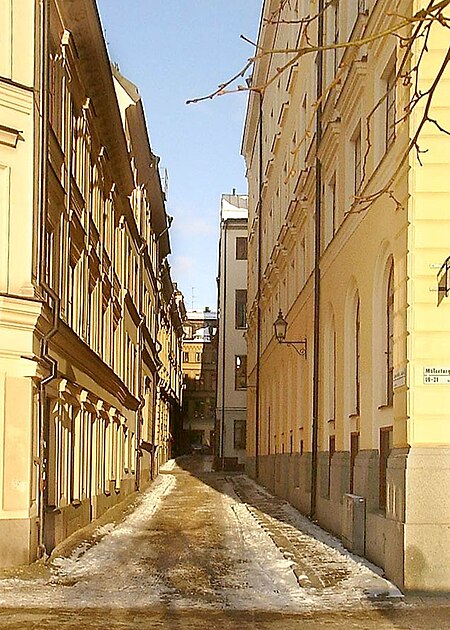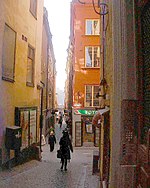Lejonstedts Gränd
Stockholm road stubsStreets in Stockholm

Lejonstedts Gränd is an alley in Gamla stan, the old town in central stockholm, Sweden. Stretching from Stora Nygatan to Mälartorget and crossed by Lilla Nygatan, it forms a parallel street to Tyska Brinken and Kornhamnstorg. It is named after the Country marshal (lantmarskalk) and Councillor of the Realm Anders Lejonstedt (1649–1725). Lejonstedt who before knighthood was named Volimhaus, owned the block taking up the north-eastern part of the street in the late-17th century together with his brother Jakob (ennobled Gyllenborg) .
Excerpt from the Wikipedia article Lejonstedts Gränd (License: CC BY-SA 3.0, Authors, Images).Lejonstedts Gränd
Lejonstedts Gränd, Stockholm Gamla stan (Södermalms stadsdelsområde)
Geographical coordinates (GPS) Address External links Nearby Places Show on map
Geographical coordinates (GPS)
| Latitude | Longitude |
|---|---|
| N 59.323166666667 ° | E 18.069972222222 ° |
Address
Lejonstedts Gränd
Lejonstedts Gränd
111 27 Stockholm, Gamla stan (Södermalms stadsdelsområde)
Sweden
Open on Google Maps










